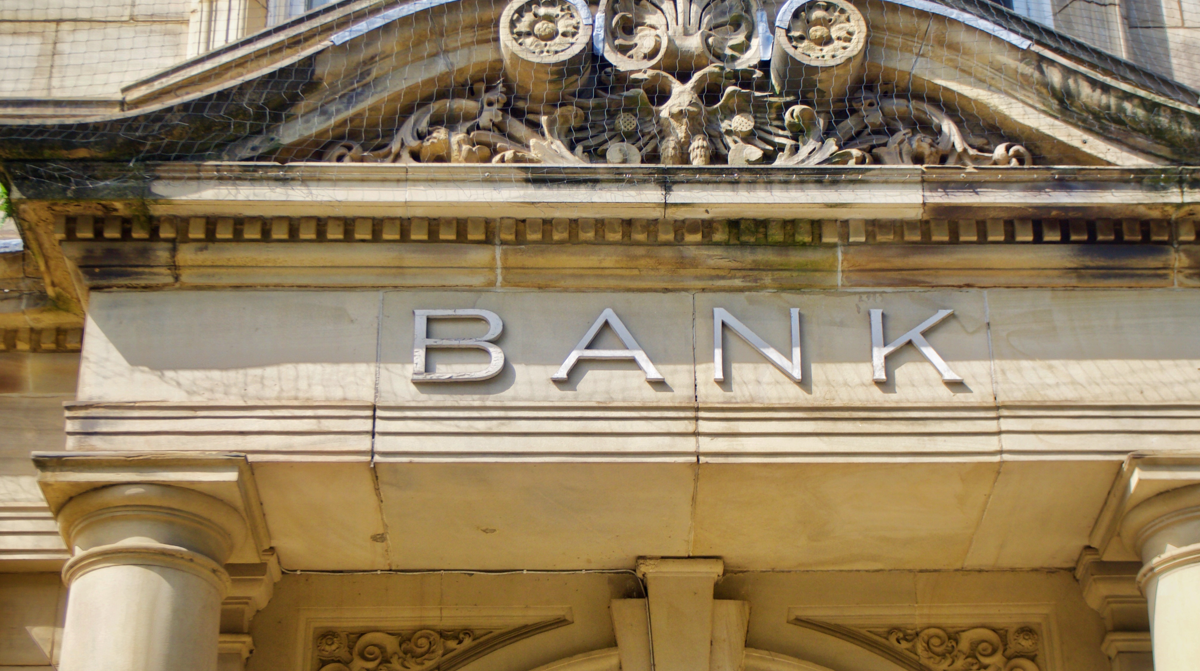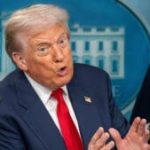
We have already described one part of the contemporary flight from sound, free market money to statized and inflated money: the abolition of the gold standard by Franklin Roosevelt in 1933, and the substitution of fiat paper tickets by the Federal Reserve as our “monetary standard.” Another crucial part of this process was the federal cartelization of the nation’s banks through the creation of the Federal Reserve System in 1913.
Banking is a particularly arcane part of the economic system; one of the problems is that the word “bank” covers many different activities, with very different implications. During the Renaissance era, the Medicis in Italy and the Fuggers in Germany, were “bankers”; their banking, however, was not only private but also began at least as a legitimate, non-inflationary, and highly productive activity. Essentially, these were “merchant-bankers,” who started as prominent merchants. In the course of their trade, the merchants began to extend credit to their customers, and in the case of these great banking families, the credit or “banking” part of their operations eventually overshadowed their mercantile activities. These firms lent money out of their own profits and savings, and earned interest from the loans. Hence, they were channels for the productive investment of their own savings.
To the extent that banks lend their own savings, or mobilize the savings of others, their activities are productive and unexceptionable. Even in our current commercial banking system, if I buy a $10,000 CD (“certificate of deposit”) redeemable in six months, earning a certain fixed interest return, I am taking my savings and lending it to a bank, which in turn lends it out at a higher interest rate, the differential being the bank’s earnings for the function of channeling savings into the hands of credit-worthy or productive borrowers. There is no problem with this process.
The same is even true of the great “investment banking” houses, which developed as industrial capitalism flowered in the nineteenth century. Investment bankers would take their own capital, or capital invested or loaned by others, to underwrite corporations gathering capital by selling securities to stockholders and creditors. The problem with the investment bankers is that one of their major fields of investment was the underwriting of government bonds, which plunged them hip-deep into politics, giving them a powerful incentive for pressuring and manipulating governments, so that taxes would be levied to pay off their and their clients’ government bonds. Hence, the powerful and baleful political influence of investment bankers in the nineteenth and twentieth centuries: in particular, the Rothschilds in Western Europe, and Jay Cooke and the House of Morgan in the United States.
By the late nineteenth century, the Morgans took the lead in trying to pressure the U.S. government to cartelize industries they were interested in–first railroads and then manufacturing: to protect these industries from the winds of free competition, and to use the power of government to enable these industries to restrict production and raise prices.
In particular, the investment bankers acted as a ginger group to work for the cartelization of commercial banks. To some extent, commercial bankers lend out their own capital and money acquired by CDs. But most commercial banking is “deposit banking” based on a gigantic scam: the idea, which most depositors believe, that their money is down at the bank, ready to be redeemed in cash at any time. If Jim has a checking account of $1,000 at a local bank, Jim knows that this is a “demand deposit,” that is, that the bank pledges to pay him $1,000 in cash, on demand, anytime he wishes to “get his money out.” Naturally, the Jims of this world are convinced that their money is safely there, in the bank, for them to take out at any time. Hence, they think of their checking account as equivalent to a warehouse receipt. If they put a chair in a warehouse before going on a trip, they expect to get the chair back whenever they present the receipt. Unfortunately, while banks depend on the warehouse analogy, the depositors are systematically deluded. Their money ain’t there.
An honest warehouse makes sure that the goods entrusted to its care are there, in its storeroom or vault. But banks operate very differently, at least since the days of such deposit banks as the Banks of Amsterdam and Hamburg in the seventeenth century, which indeed acted as warehouses and backed all of their receipts fully by the assets deposited, e.g., gold and silver. This honest deposit or “giro” banking is called “100 percent reserve” banking. Ever since, banks have habitually created warehouse receipts (originally bank notes and now deposits) out of thin air. Essentially, they are counterfeiters of fake warehouse-receipts to cash or standard money, which circulate as if they were genuine, fully-backed notes or checking accounts. Banks make money by literally creating money out of thin air, nowadays exclusively deposits rather than bank notes. This sort of swindling or counterfeiting is dignified by the term “fractional-reserve banking,” which means that bank deposits are backed by only a small fraction of the cash they promise to have at hand and redeem. (Right now, in the United States, this minimum fraction is fixed by the Federal Reserve System at 10 percent.)
Fractional Reserve Banking
Let’s see how the fractional reserve process works, in the absence of a central bank. I set up a Rothbard Bank, and invest $1,000 of cash (whether gold or government paper does not matter here). Then I “lend out” $10,000 to someone, either for consumer spending or to invest in his business. How can I “lend out” far more than I have? Ahh, that’s the magic of the “fraction” in the fractional reserve. I simply open up a checking account of $10,000 which I am happy to lend to Mr. Jones. Why does Jones borrow from me? Well, for one thing, I can charge a lower rate of interest than savers would. I don’t have to save up the money myself, but simply can counterfeit it out of thin air. (In the nineteenth century, I would have been able to issue bank notes, but the Federal Reserve now monopolizes note issues.) Since demand deposits at the Rothbard Bank function as equivalent to cash, the nation’s money supply has just, by magic, increased by $10,000. The inflationary, counterfeiting process is under way.
The nineteenth-century English economist Thomas Tooke correctly stated that “free trade in banking is tantamount to free trade in swindling.” But under freedom, and without government support, there are some severe hitches in this counterfeiting process, or in what has been termed “free banking.” First: why should anyone trust me? Why should anyone accept the checking deposits of the Rothbard Bank? But second, even if I were trusted, and I were able to con my way into the trust of the gullible, there is another severe problem, caused by the fact that the banking system is competitive, with free entry into the field. After all, the Rothbard Bank is limited in its clientele. After Jones borrows checking deposits from me, he is going to spend it. Why else pay money for a loan? Sooner or later, the money he spends, whether for a vacation, or for expanding his business, will be spent on the goods or services of clients of some other bank, say the Rockwell Bank. The Rockwell Bank is not particularly interested in holding checking accounts on my bank; it wants reserves so that it can pyramid its own counterfeiting on top of cash reserves. And so if, to make the case simple, the Rockwell Bank gets a $10,000 check on the Rothbard Bank, it is going to demand cash so that it can do some inflationary counterfeit-pyramiding of its own. But, I, of course, can’t pay the $10,000, so I’m finished. Bankrupt. Found out. By rights, I should be in jail as an embezzler, but at least my phoney checking deposits and I are out of the game, and out of the money supply.
Hence, under free competition, and without government support and enforcement, there will only be limited scope for fractional-reserve counterfeiting. Banks could form cartels to prop each other up, but generally cartels on the market don’t work well without government enforcement, without the government cracking down on competitors who insist on busting the cartel, in this case, forcing competing banks to pay up.
Central Banking
Hence the drive by the bankers themselves to get the government to cartelize their industry by means of a central bank. Central Banking began with the Bank of England in the 1690s, spread to the rest of the Western world in the eighteenth and nineteenth centuries, and finally was imposed upon the United States by banking cartelists via the Federal Reserve System of 1913. Particularly enthusiastic about the Central Bank were the investment bankers, such as the Morgans, who pioneered the cartel idea, and who by this time had expanded into commercial banking.
In modern central banking, the Central Bank is granted the monopoly of the issue of bank notes (originally written or printed warehouse receipts as opposed to the intangible receipts of bank deposits), which are now identical to the government’s paper money and therefore the monetary “standard” in the country. People want to use physical cash as well as bank deposits. If, therefore, I wish to redeem $1,000 in cash from my checking bank, the bank has to go to the Federal Reserve, and draw down its own checking account with the Fed, “buying” $1,000 of Federal Reserve Notes (the cash in the United States today) from the Fed. The Fed, in other words, acts as a bankers’ bank. Banks keep checking deposits at the Fed and these deposits constitute their reserves, on which they can and do pyramid ten times the amount in checkbook money.
Here’s how the counterfeiting process works in today’s world. Let’s say that the Federal Reserve, as usual, decides that it wants to expand (i.e., inflate) the money supply. The Federal Reserve decides to go into the market (called the “open market”) and purchase an asset. It doesn’t really matter what asset it buys; the important point is that it writes out a check. The Fed could, if it wanted to, buy any asset it wished, including corporate stocks, buildings, or foreign currency. In practice, it almost always buys U.S. government securities.
Let’s assume that the Fed buys $10,000,000 of U.S. Treasury bills from some “approved” government bond dealer (a small group), say Shearson, Lehman on Wall Street. The Fed writes out a check for $10,000,000, which it gives to Shearson, Lehman in exchange for $10,000,000 in U.S. securities. Where does the Fed get the $10,000,000 to pay Shearson, Lehman? It creates the money out of thin air. Shearson, Lehman can do only one thing with the check: deposit it in its checking account at a commercial bank, say Chase Manhattan. The “money supply” of the country has already increased by $10,000,000; no one else’s checking account has decreased at all. There has been a net increase of $10,000,000.
But this is only the beginning of the inflationary, counterfeiting process. For Chase Manhattan is delighted to get a check on the Fed, and rushes down to deposit it in its own checking account at the Fed, which now increases by $10,000,000. But this checking account constitutes the “reserves” of the banks, which have now increased across the nation by $10,000,000. But this means that Chase Manhattan can create deposits based on these reserves, and that, as checks and reserves seep out to other banks (much as the Rothbard Bank deposits did), each one can add its inflationary mite, until the banking system as a whole has increased its demand deposits by $100,000,000, ten times the original purchase of assets by the Fed. The banking system is allowed to keep reserves amounting to 10 percent of its deposits, which means that the “money multiplier”–the amount of deposits the banks can expand on top of reserves–is 10. A purchase of assets of $10 million by the Fed has generated very quickly a tenfold, $100,000,000 increase in the money supply of the banking system as a whole.
Interestingly, all economists agree on the mechanics of this process even though they of course disagree sharply on the moral or economic evaluation of that process. But unfortunately, the general public, not inducted into the mysteries of banking, still persists in thinking that their money remains “in the bank.”
Thus, the Federal Reserve and other central banking systems act as giant government creators and enforcers of a banking cartel; the Fed bails out banks in trouble, and it centralizes and coordinates the banking system so that all the banks, whether the Chase Manhattan, or the Rothbard or Rockwell banks, can inflate together. Under free banking, one bank expanding beyond its fellows was in danger of imminent bankruptcy. Now, under the Fed, all banks can expand together and proportionately.
“Deposit Insurance”
But even with the backing of the Fed, fractional reserve banking proved shaky, and so the New Deal, in 1933, added the lie of “bank deposit insurance,” using the benign word “insurance” to mask an arrant hoax. When the savings and loan system went down the tubes in the late 1980s, the “deposit insurance” of the federal FSLIC [Federal Savings and Loan Insurance Corporation] was unmasked as sheer fraud. The “insurance” was simply the smoke-and-mirrors term for the unbacked name of the federal government. The poor taxpayers finally bailed out the S&Ls, but now we are left with the formerly sainted FDIC [Federal Deposit Insurance Corporation], for commercial banks, which is now increasingly seen to be shaky, since the FDIC itself has less than one percent of the huge number of deposits it “insures.”
The very idea of “deposit insurance” is a swindle; how does one insure an institution (fractional reserve banking) that is inherently insolvent, and which will fall apart whenever the public finally understands the swindle? Suppose that, tomorrow, the American public suddenly became aware of the banking swindle, and went to the banks tomorrow morning, and, in unison, demanded cash. What would happen? The banks would be instantly insolvent, since they could only muster 10 percent of the cash they owe their befuddled customers. Neither would the enormous tax increase needed to bail everyone out be at all palatable. No: the only thing the Fed could do, and this would be in their power, would be to print enough money to pay off all the bank depositors. Unfortunately, in the present state of the banking system, the result would be an immediate plunge into the horrors of hyperinflation.
Let us suppose that total insured bank deposits are $1,600 billion. Technically, in the case of a run on the banks, the Fed could exercise emergency powers and print $1,600 billion in cash to give to the FDIC to pay off the bank depositors. The problem is that, emboldened at this massive bailout, the depositors would promptly redeposit the new $1,600 billion into the banks, increasing the total bank reserves by $1,600 billion, thus permitting an immediate expansion of the money supply by the banks by tenfold, increasing the total stock of bank money by $16 trillion. Runaway inflation and total destruction of the currency would quickly follow.
Originally published as part two of a three-article series in The Freeman, September-November 1995.






